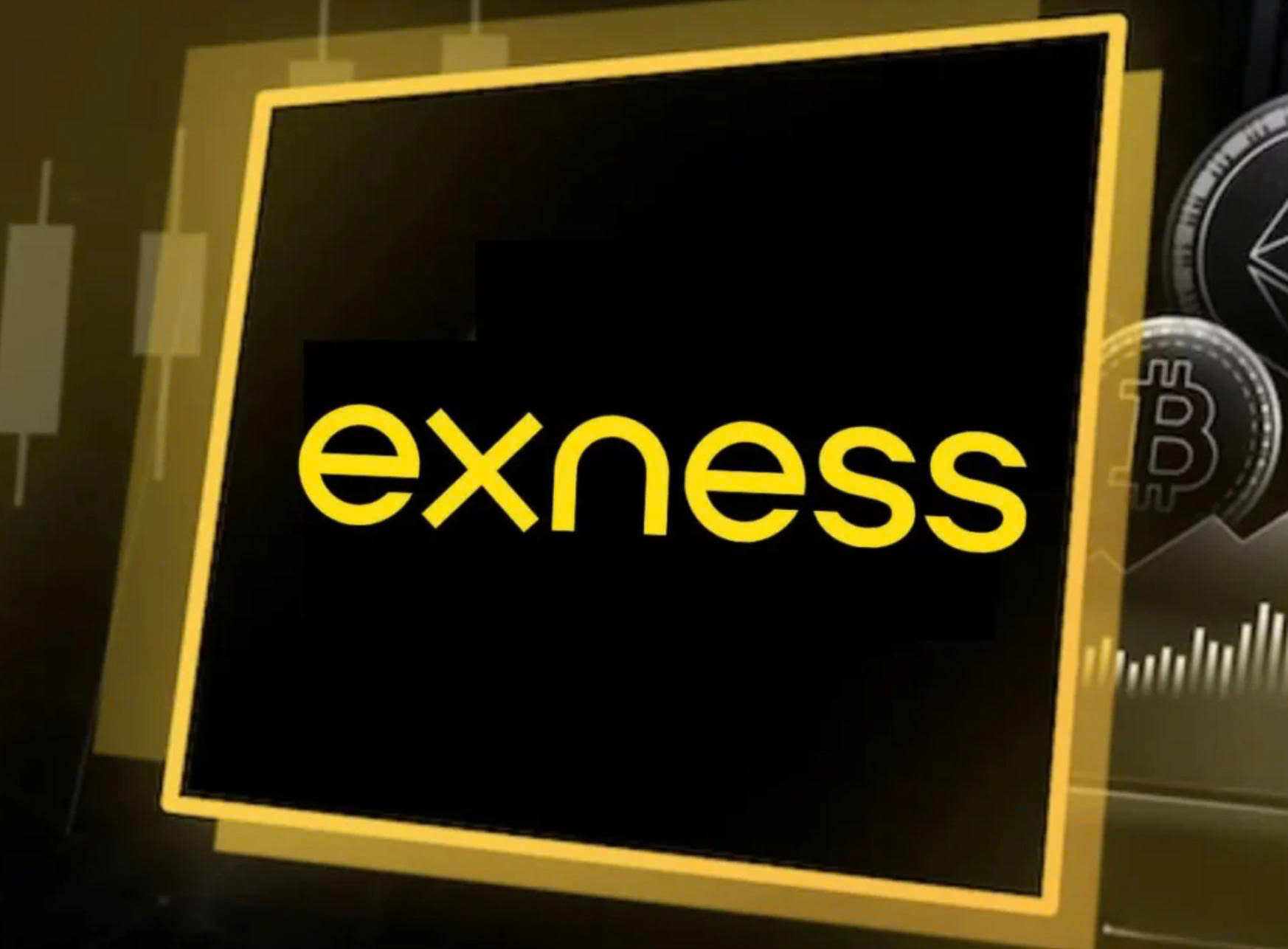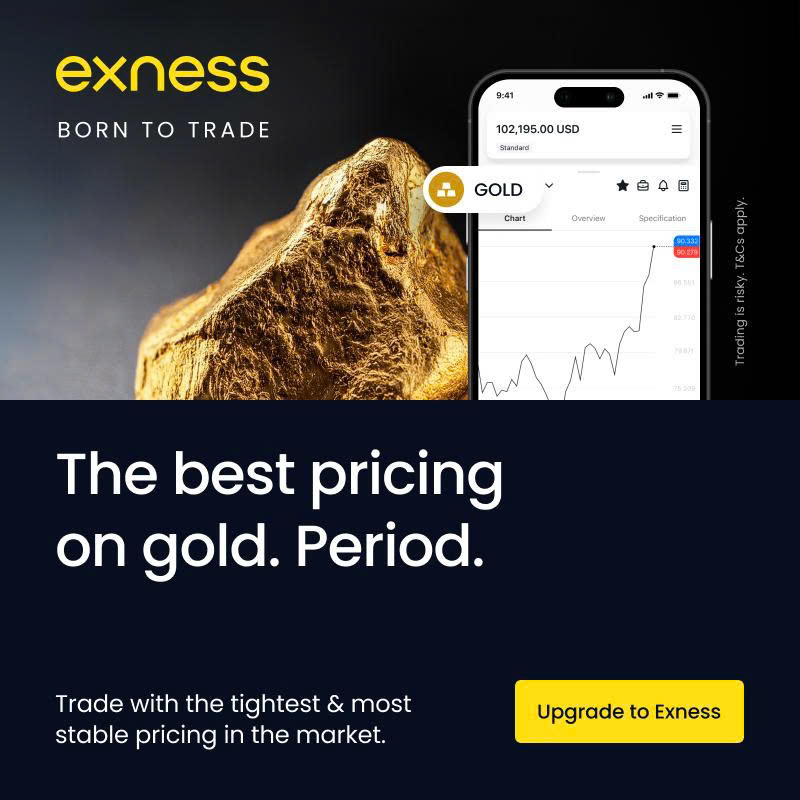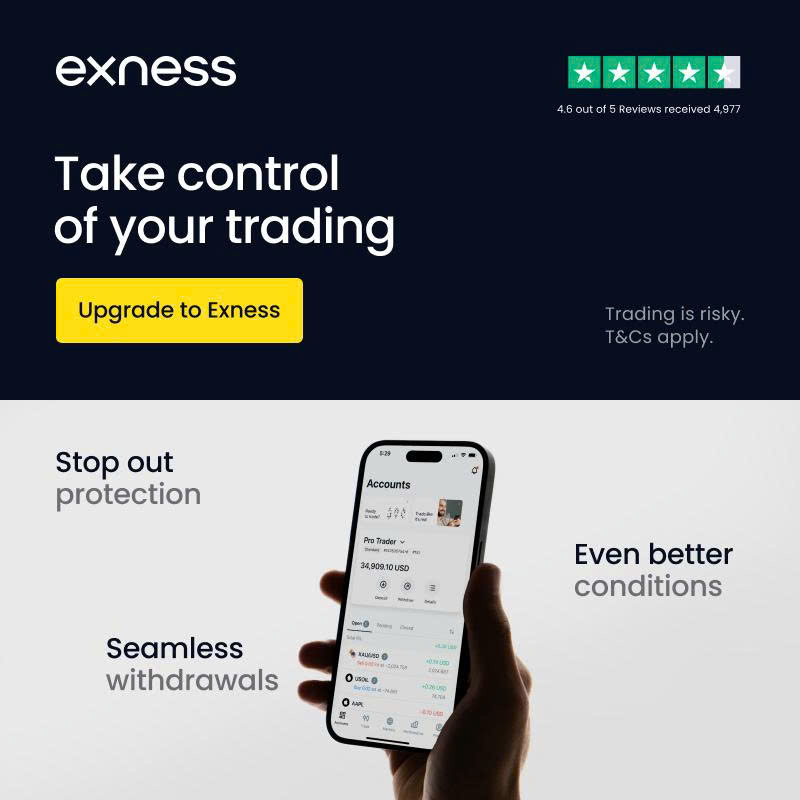
8 minute read
Which Is Better Exness or XM? A Comprehensive Comparison
from Which Exness or XM
When it comes to choosing a forex broker, Exness or XM are two names that often pop up in conversations among traders. Both are well-established, trusted platforms, but which one is better for you? The answer depends on your trading style, goals, and preferences. In this article, we’ll dive into a head-to-head comparison of Exness or XM, breaking down their features, fees, platforms. By the end, you’ll have a clear idea of which broker suits your needs best.

✅ Trade with Exness now: Open An Account or Visit Brokers 👈
Why Compare Exness or XM?
Exness or XM are both giants in the forex trading world, known for their reliability, user-friendly platforms, and competitive offerings. But they cater to slightly different audiences. Exness is often praised for its ultra-tight spreads and high leverage, while XM shines with its beginner-friendly approach and robust educational resources. Let’s break it down step-by-step to help you decide.
1. Regulation and Trustworthiness
First things first: safety. You want a broker you can trust with your hard-earned money. Both Exness or XM score high in this department, but there are differences.
Exness is regulated by multiple authorities, including the Financial Services Authority (FSA) in Seychelles, the Cyprus Securities and Exchange Commission (CySEC), and the Financial Conduct Authority (FCA) in the UK. This multi-jurisdictional regulation makes Exness a solid choice for traders who prioritize security across different regions.
XM, on the other hand, is also heavily regulated. It’s licensed by CySEC, the Australian Securities and Investments Commission (ASIC), and the International Financial Services Commission (IFSC) in Belize. XM’s regulation is equally robust, giving traders peace of mind.
Verdict: It’s a tie. Both brokers are tightly regulated and have a strong reputation for reliability. Choose based on which regulatory body aligns with your location or preference.
2. Account Types and Flexibility
Your trading style will heavily influence which broker’s account types work best for you. Let’s see how they stack up.
Exness Account Types
Exness offers a range of account types tailored to different experience levels:
Standard Account: Great for beginners, with no commission and low minimum deposits (starting at $10, depending on the region).
Pro Account: Designed for experienced traders, offering tighter spreads and low commissions.
Zero Account: Ideal for high-volume traders, with zero spreads on major pairs but higher commissions.
Raw Spread Account: Ultra-low spreads with a fixed commission, perfect for scalpers.
Exness also stands out for its unlimited leverage option on certain accounts, which can be a game-changer for experienced traders comfortable with high-risk strategies.
XM Account Types
XM keeps things simpler with four main account types:
Micro Account: Perfect for beginners, with a low minimum deposit of $5 and micro-lot trading.
Standard Account: Similar to the Micro but with standard lot sizes, catering to intermediate traders.
XM Ultra-Low Account: Offers ultra-tight spreads with no commissions, great for cost-conscious traders.
Shares Account: Focused on stock CFDs, less relevant for forex traders.
XM’s accounts are beginner-friendly, with low entry barriers and flexible lot sizes, making it easier for newbies to dip their toes into trading.
Verdict: Exness wins for flexibility, especially for advanced traders who want unlimited leverage and specialized accounts like Zero or Raw Spread. XM is better for beginners due to its low minimum deposits and straightforward account options.

✅ Trade with Exness now: Open An Account or Visit Brokers 👈
3. Fees and Spreads
Nobody likes hidden fees eating into their profits, so let’s talk costs.
Exness Fees
Exness is known for its industry-leading spreads, especially on its Zero and Raw Spread accounts. For example, spreads on major pairs like EUR/USD can drop to 0.0 pips, though you’ll pay a commission (around $3.5 per lot on Raw Spread accounts). Standard accounts have no commissions but slightly wider spreads (starting at 0.3 pips). Exness also offers free withdrawals and fast processing times, often within the same day.
XM Fees
XM’s spreads are competitive but generally higher than Exness’s. On the Ultra-Low account, spreads start at 0.6 pips with no commissions, while Standard and Micro accounts have spreads starting at 1.0 pip. XM also charges inactivity fees ($5/month after 90 days of inactivity), which Exness doesn’t impose. Withdrawal fees depend on the method but are generally low or free for certain options.
Verdict: Exness takes the lead for lower spreads and commission-free Standard accounts, making it more cost-effective for high-volume traders. XM’s fees are reasonable but less aggressive, especially for scalpers.
4. Trading Platforms
Both brokers support the industry-standard MetaTrader 4 (MT4) and MetaTrader 5 (MT5), but their offerings differ slightly.
Exness Platforms
Exness provides MT4, MT5, and its proprietary Exness Terminal, a web-based platform that’s sleek and user-friendly. They also offer a mobile app for trading on the go, which is highly rated for its clean interface and fast execution. Exness’s platforms are optimized for speed, which is crucial for scalpers and day traders.
XM Platforms
XM sticks to MT4 and MT5, with no proprietary platform. Their platforms are reliable, customizable, and packed with tools like Expert Advisors (EAs) and technical indicators. XM’s mobile app is solid but doesn’t stand out as much as Exness’s.
Verdict: Exness edges out slightly thanks to its proprietary terminal and superior mobile app. However, if you’re loyal to MT4/MT5, both brokers deliver equally well.
5. Leverage and Risk
Leverage can amplify your profits—or your losses—so it’s a critical factor.
Exness: Offers unlimited leverage on certain accounts, which is rare in the industry. This is a double-edged sword: great for experienced traders but risky for beginners. Standard leverage caps at 1:2000 for most accounts, which is still very high.
XM: Caps leverage at 1:1000 for forex, which is generous but more conservative than Exness. XM also offers negative balance protection, ensuring you don’t lose more than your deposit.
Verdict: Exness is better for high-risk traders who want maximum leverage. XM is safer for beginners due to its lower leverage cap and negative balance protection.
6. Education and Support
If you’re new to forex, educational resources and customer support can make or break your experience.
Exness Education and Support
Exness offers decent educational resources, including webinars, tutorials, and market analysis. However, their focus is more on advanced traders, so beginners might find the content less comprehensive. Their 24/7 customer support is excellent, with live chat, email, and phone options available in multiple languages.
XM Education and Support
XM excels in this area, offering a robust suite of educational tools: free webinars, video tutorials, trading signals, and a dedicated research portal. Their XM Learning Center is a goldmine for beginners. Customer support is also 24/7, with fast response times and multilingual options.
Verdict: XM wins hands-down for education, making it the go-to choice for new traders. Exness’s support is solid but lacks the same depth in educational content.
7. Deposit and Withdrawal Options
Both brokers make funding and withdrawing easy, but there are nuances.
Exness: Supports a wide range of payment methods, including bank cards, e-wallets (Skrill, Neteller), and cryptocurrencies. Withdrawals are processed quickly, often within hours, with no fees for most methods.
XM: Offers similar payment options, including cards, e-wallets, and bank transfers. Withdrawals are generally free but can take 1-3 days depending on the method.
Verdict: Exness is faster and more cost-effective for withdrawals, giving it a slight edge.
8. Trading Instruments
Diversity in trading instruments allows you to explore beyond forex.
Exness: Offers forex, metals, cryptocurrencies, energies, indices, and stocks. Their crypto offerings are particularly strong, with 24/7 trading on major coins like Bitcoin and Ethereum.
XM: Covers forex, commodities, indices, stocks, metals, and energies. XM’s stock CFDs are a highlight, with a broader selection than Exness.
Verdict: XM offers more stock CFDs, while Exness is better for crypto enthusiasts. Choose based on your preferred markets.
9. Bonuses and Promotions
Exness: Rarely offers bonuses, focusing instead on low costs and tight spreads.
XM: Frequently provides bonuses, like deposit bonuses and loyalty programs, which can boost your trading capital, especially for beginners.
Verdict: XM is the clear winner if you’re looking for bonuses to kickstart your trading.
Final Thoughts: Exness or XM?
So, which broker is better? It depends on you.
Choose Exness if: You’re an experienced trader, scalper, or high-volume trader who values ultra-tight spreads, unlimited leverage, and fast withdrawals. Exness is also great for crypto trading.
Choose XM if: You’re a beginner or intermediate trader who wants a user-friendly platform, low minimum deposits, and top-notch educational resources. XM’s bonuses are a nice perk, too.
Both brokers are excellent, but Exness leans toward advanced traders, while XM caters more to beginners. Take a moment to assess your trading goals, risk tolerance, and experience level. If you’re still unsure, try opening a demo account with both brokers to test their platforms firsthand.
✅ Trade with Exness now: Open An Account or Visit Brokers 👈
Read more:

